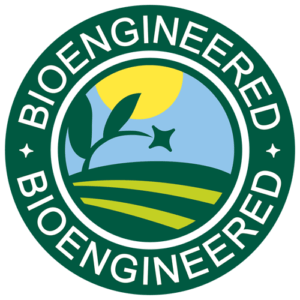Cornucopia’s Take: The GMO labeling law crawled out of the swamp in time for Christmas. The USDA will allow QR codes instead of legitimate labeling and, for those who do choose to label clearly, the necessary language is the little-know phrase, “bioengineered food.” Soda and oils made from GMOs are exempt from any labeling. The article below was written by Max Goldberg, the editor/publisher of Organic Insider, a weekly newsletter about the organic industry.
With its New GMO-Labeling Rule, the USDA Has Completely Failed the American Consumer
Living Maxwell
by Max Goldberg
Based on what we have seen from the current administration’s USDA — the scrapping of the organic animal welfare rules, allowing hydroponics in organic even though it is a complete violation of the Organic Foods Production Act of 1990, and turning a blind eye to ‘organic factory farms’ – should anyone be the least bit surprised that the recently released GMO-labeling rules completely fail the American consumer?
Officially announced right before Christmas, key aspects of the new GMO-labeling rules – also known as the National Bioengineered Food Disclosure Standard – include the following:
 – Instead of requiring companies to use the on-package labels “Made with GMOs” or “Made with Genetic Engineering”, which would make it easy for consumers, the USDA has done the polar opposite.
– Instead of requiring companies to use the on-package labels “Made with GMOs” or “Made with Genetic Engineering”, which would make it easy for consumers, the USDA has done the polar opposite.
Not only are companies not required to use on-package labels, but they can use QR codes instead. As the Center for Food Safety has long argued, QR codes are inherently discriminatory to the elderly, poor, rural and minorities.
And if companies do use an on-package label, it must use the phrase “bioengineered food,” a term not commonly used or understood by consumers.
-Many GMO foods were exempted from the disclosure rules, including highly refined oils and many soft drinks, on the grounds that they don’t contain detectable DNA. Consumers want to know if ingredients are from GMO-sources, regardless of the DNA detectability.
What makes this specific exemption even more ridiculous is that the Grocery Manufacturers Association (the lobbying group which represents Big Food) argued that these refined oils and ingredients should be disclosed “in order to give consumers the transparency that they demand.”
The Sustainable Food Policy Alliance – comprised of Mars, Danone, Unilever and Nestle– criticized this exemption as well and said that “the standards fall short of consumer expectations.”
– If an on-package symbol is to be used, it must be the symbol below.
The yellow sun, blue sky and green grass will mislead consumers into thinking that bioengineered food is healthy — when it is not!
– The GMO-labeling rules do not have to go into effect until 2022, which keeps consumers in the dark for another few more years.
– The law allows USDA certified organic products to use the claim “Non-GMO”.
As I wrote about it 2016, this is incredibly problematic. Why?
If organic products are found to have very high levels of GMO-contamination and these products contain the label “Non-GMO” on the outside of the packaging (now allowed because of this new GMO-labeling rule), this may cause irreparable harm to the integrity of the organic seal.
IN CONCLUSION
Without question, these GMO-labeling rules have prioritized the interests of major GMO seed and chemical companies at the complete expense of shoppers.
Leading consumer advocates agree.
Andrew Kimbrell, Executive Director of the Center for Food Safety, said, “The USDA has betrayed the public trust by denying Americans the right to know how their food is produced. Instead of providing clarity and transparency, they have created large-scale confusion and uncertainty for consumers, food producers, and retailers.”
“The USDA’s new disclosure rule will likely keep many consumers in the dark about whether the food they buy has been genetically engineered,” said Michael Hansen, PhD, Senior Staff Scientist at Consumer Reports. “The overwhelming majority of consumers want genetically engineered food to be clearly labeled, but this rule fails to give consumers the information they deserve.”
What to do?
Look for USDA certified organic foods first and then look for products that contain the Non-GMO Project seal.
In the case of GMO-labeling, there is no other way to put it — our government has failed the American consumer. As a result, every citizen must take extra precaution to make sure that the food that he or she is eating is not genetically-modified.

